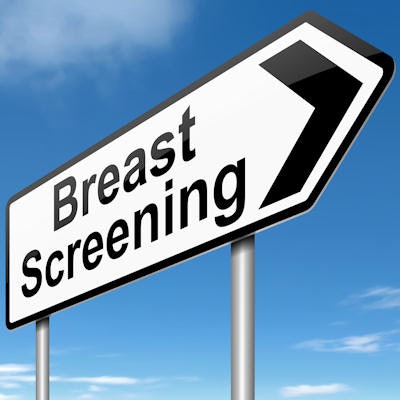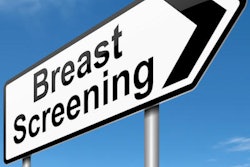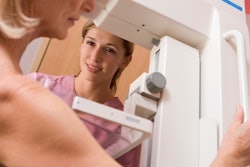
A 20-year study of breast cancer in the Netherlands showed mammography screening is associated with a 30% decline in breast cancer mortality in women between the ages of 55 and 79. They also found that the mortality decline began within a couple of years after screening started.
The researchers obtained data on more than 69,000 breast cancer deaths between 1980 and 2010 by municipality and age at death. The research team led by Valérie Sankatsing, a doctoral student in the public health department of the Erasmus Medical Center in Rotterdam, the Netherlands, found screening reduced breast cancer mortality by 30% in women between the ages of 55 and 74 and by 34% in women between the ages of 75 and 79.
"Our results show a significant decrease in breast cancer mortality shortly after the introduction of screening at the municipality level in women invited to screening and in older women, similar in early starting municipalities (with more effective adjuvant treatment available), indicating that this decrease is strongly associated with the implementation of the national screening program," they wrote (International Journal of Cancer, 29 April 2017).
The importance of long follow-up
To assess screening mammography's effectiveness, a long follow-up period after screening begins is crucial; however, trend studies with adequate follow-up are scarce, according to Sankatsing and colleagues. Therefore, they aimed to assess the effect of population-based screening on breast cancer mortality rates in the Netherlands using a long follow-up of 20 years after the start of nationwide screening and approximately 10 years after the extension of screening from age 69 to age 74.
In the Netherlands, mammography screening for women ages 50 to 69 was gradually implemented between 1987 and 1997 and extended to age 74 between 1998 and 2001. Women are screened once every two years.
"By analyzing breast cancer mortality between 1980 and 2010, this study will add 10 years of follow-up to previous work," the authors wrote. "In addition, the long(er) follow-up after the extension of screening allowed us to assess the full impact of screening between the ages of 50 and 74."
Also, because they analyzed breast cancer mortality at the municipality level, they could account explicitly for the municipality-specific introduction year of screening.
The researchers obtained data on 69,630 breast cancer deaths during their 20-year follow-up. Breast cancer mortality trends were analyzed by defining the municipality-specific calendar year of introduction of screening as year 0. Log-linear Poisson regression was used to estimate the turning point in the trend after year 0, per municipality, and the annual percentage change before and after this point.
The team then divided municipalities into three groups of comparable size: early starters (screening introduced between 1987 and 1992), intermediate starters (screening introduced between 1993 and 1994), and late starters (screening introduced between 1995 and 1997).
The researchers found that, 20 years after introducing screening, breast cancer mortality was reduced by 30% in women ages 55 to 74 and by 34% in women ages 75 to 79, compared with year 0. A similar and significant decrease was present in municipalities that started early (1987 to 1992) and late (1995 to 1997) with screening. In the age groups 55 to 74 and 75 to 79, the turning point in the trend in breast cancer mortality was estimated in year 2 and year 6 after the introduction of screening, after which mortality decreased significantly annually by 1.9% and 2.6%, respectively.
Also, the mortality rates were similar for early, intermediate, and late starters before and after the introduction of screening; all three groups showed a strong and similar decline in breast cancer mortality.
"The results support that mammography screening from age 50 to 74 contributes to a reduction in breast cancer mortality," the authors wrote.
How this study compares
The researchers noted that the start of the decline in breast cancer mortality that they observed might seem early and in conflict with the expectation that the full effect of screening cannot be observed before three to five years after the first invitation to screen.
"However, the estimate of the delay in the effect of screening is largely based on results of the randomized controlled trials of breast cancer screening, which started in the early 1980s," the authors wrote. "As the number of breast cancer deaths in our study is substantially higher than in any of the trials, which had around 750 to 2,000 breast cancer deaths, it is plausible that the effect of screening already occurs before three years after its introduction."
In addition, when screening was introduced, there may have been women with metastasized breast cancer who were not yet diagnosed and who would have died within two years in the absence of screening, according to the authors.
"Screen detection may have averted deaths in some of these cases, which could have led to a rapid effect on breast cancer mortality rates in terms of mortality reductions," Sankatsing and colleagues wrote. "More importantly, a change in the trend in breast cancer mortality, from a stable to a downwards trend, after the introduction of screening is likely to occur before the point in time at which the full effect of screening can be observed.
The study has some limitations. Mainly, women in one municipality may have moved to another municipality during the screening period so the correlation between the municipality-specific introduction year of screening and female inhabitants will become smaller over time.



















